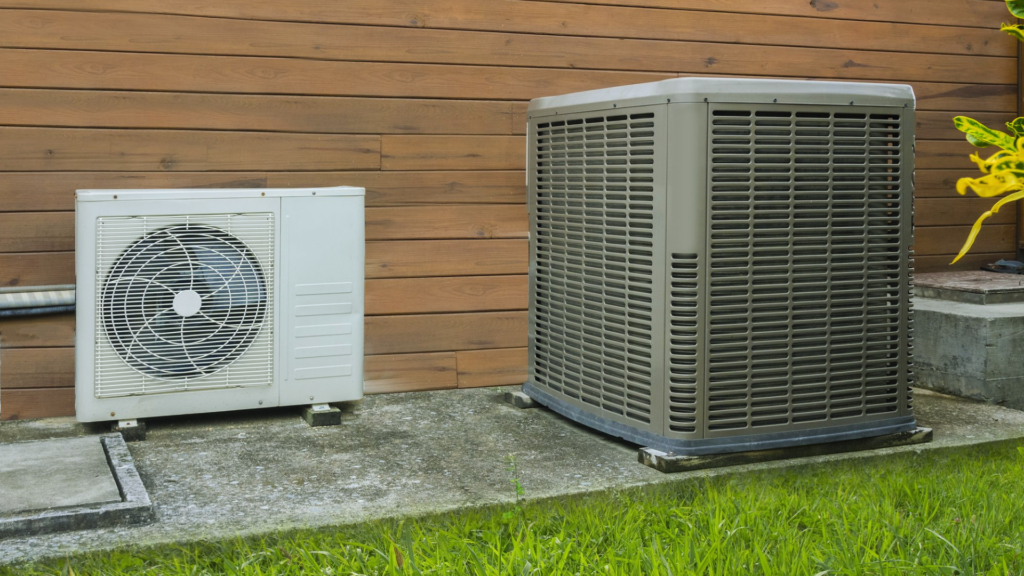ACCA’s Sean Robertson on rebates, tax credits, and the refrigerant transition
He dialed in from D.C. and shared his perspectives on the three federal elephants in the room

Image: Sean Robertson
Sean Robertson, a VP at ACCA, sat down to help us — and you — understand the latest happenings in the constantly moving legal world of HVAC.
He dialed in from D.C. and shared his perspectives on the three federal elephants in the room: Rebates, tax credits, and the refrigerant transition.
At a high level, what are your thoughts on the Inflation Reduction Act’s Home Energy Rebates programs?
-
Our first message to contractors is that while there’s certainly a lot of potential with the rebate programs, the federal tax credits are available today in every state — and they’ve been greatly improved.
-
Instead of a homeowner having a one-time, $500 cap for the 25C credit, they can now claim up to $3,200 every single year.
-
From an ACCA perspective, we’re excited about the HOMES program, because it incentivizes everything contractors do — not just heat pumps, for example, but whole home energy improvements that include efficient gas equipment.
What about the other program, HEAR?
-
The HEAR program has the benefit of simplicity, providing low to moderate-income families up to $14,000 for heat pumps and other electrification projects.
-
There’s a lot of potential there, but I worry that the funding could go very quickly depending on how states implement it.
Do you have other concerns with either program?
-
Smart contractors could have the potential to dominate their markets using these programs, but, of course, the concern is whether states are going to fulfill the vision [for them].
-
I’ve heard in New York, through the EmPower+ program, that a contractor can work with a customer and set up a job, but unless that customer specifically requests them as they fill out the [rebate] application, the state will assign them to a random contractor.
-
It’ll be a challenge to work state by state to get these programs implemented effectively, but ACCA is working with state and local organizations to promote program elements that give quality contractors a fighting chance.
❝
I think a lot of contractors are just now waking up to the fact that this transition is happening, and I think it’ll happen quicker than most folks realize.
Why do people say the existing tax credits will be more impactful than the rebate programs?
-
If you look at the estimate for how much the residential tax credits will cost… it’s four times bigger than the $9 billion for the rebate programs.
-
The tax credits are here today, and they’re here to stay. Of course, if we hit a budget issue, Congress could change the tax law, but I don’t see the tax credits going away until 2032 at the earliest.
How do you think the election could impact things?
-
I think it’s certainly been this administration’s goal to get as many of the [rebate] funds allocated to states as quickly as possible. Once funds are allocated to a state, it’s very hard to call them back.
-
If there’s a big push to reduce the deficit [in a new administration], anything that costs money could have a target on it. I think funds under the IRA will largely be allocated, but any unspent funds could be rescinded.
-
On the tax front, they could come in and reduce the tax credits, but there are bigger targets; I think they’ll be reluctant to do that.
What’s the latest on the refrigerant transition?
-
The EPA originally sought to ban the installation of R-410A equipment on January 1, 2025.
-
That would have caused a supply chain disaster as OEMs would have halted production to avoid being left with unsold inventory, but ACCA and its allies scored a big victory with a one-year delay.
-
In September, we expect to see a final rule on issues like cylinder tracking, refrigerant recordkeeping, and requirements to use reclaimed refrigerant instead of virgin refrigerant.
Is there anything else that contractors should be thinking about surrounding the transition?
-
I think a lot of contractors are just now waking up to the fact that this transition is happening, and I think it’ll happen quicker than most folks realize.
-
The only equipment available through their distributors come January will be A2L equipment, and that means contractors should be making plans for employees to safely handle these refrigerants now.
-
We’re also watching what’s on the horizon: States like New York and California are proposing a transition to highly flammable A3 refrigerants, like propane, as soon as 2030.
-
While ACCA is interested in a safe transition to natural refrigerants, we’re nowhere near ready to have appropriate standards, codes, training, and certified products within that timeframe.
📬 Get our stories in your inbox
Keep reading
Q&A: The benefits of remote CSRs with AnswerForce
As a business owner, you’re practically a superhero. But unfortunately, you and your team can’t be awake 24/7
HVAC shipments soar 55% in November
The increase marks eight consecutive months of growth and puts year-to-date shipments 11 percent above 2023


